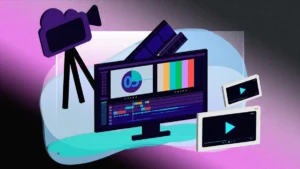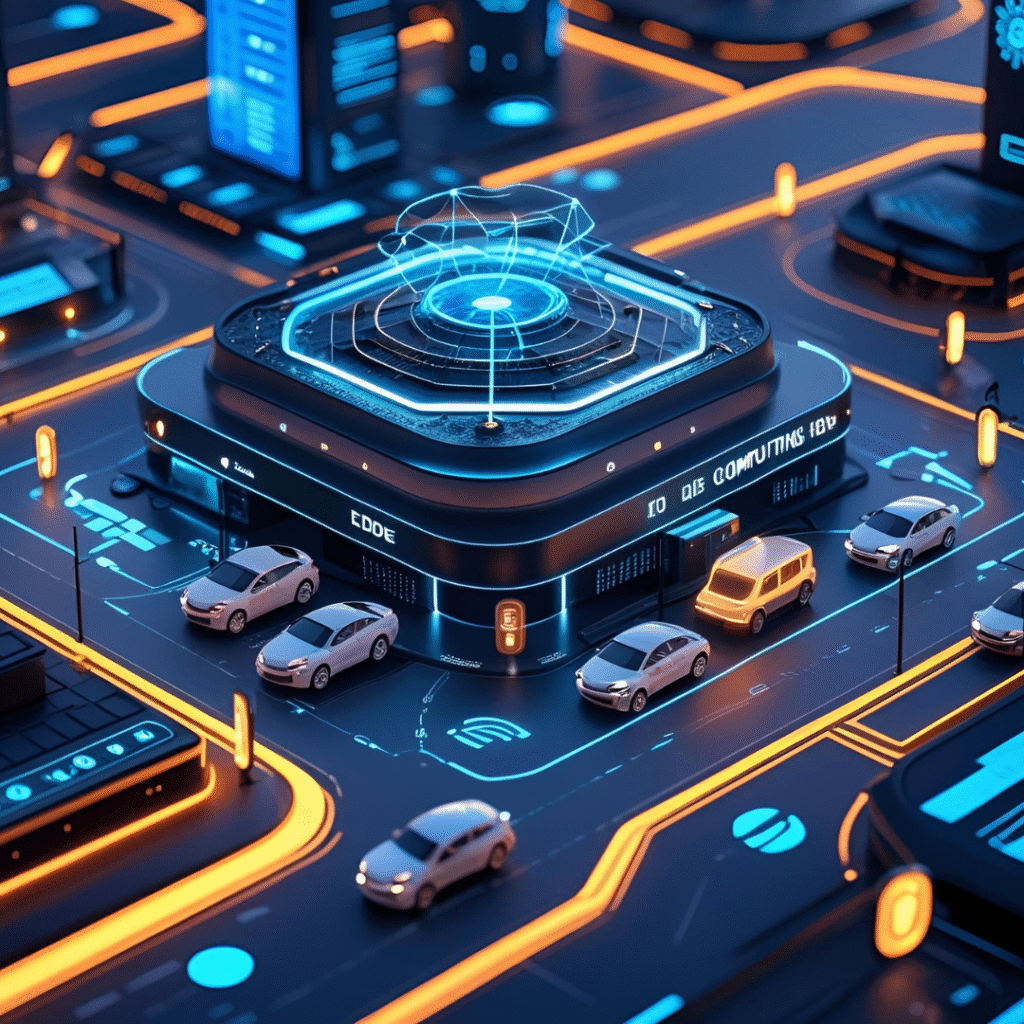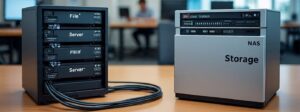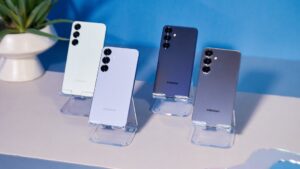
Edge Computing in 2025: The Future of Faster, Smarter Technology

Introduction: Bringing the Brain Closer to the Action
Imagine your brain had to send every thought to a computer in another city before your body could react. That would make everyday actions painfully slow! This is exactly the problem edge computing solves for our smart devices. By 2025, this technology will power everything from self-driving cars to smart cities, making our digital world faster and more efficient.
Edge computing is like having mini-computers right where the action happens, instead of sending all data to distant cloud servers. Let’s break down this important concept in simple terms with real-world examples anyone can understand.
What is Edge Computing? (The Simple Explanation)
Cloud Computing vs. Edge Computing: What’s the Difference?
In today’s connected world, data is constantly being generated—from smart home devices to self-driving cars. But how and where should this data be processed? That’s where cloud computing and edge computing come in. Both have their strengths, but they work in very different ways.
Cloud Computing: The Faraway Brain
Imagine you write a letter and mail it to another country just to get a simple reply. That’s how cloud computing often works.
How It Works: Data is sent to faraway data centers (the “cloud”) for processing.
Example: When you ask a voice assistant like Alexa a question, your voice recording travels to Amazon’s servers, gets processed, and then sends back an answer.
Pros:
Huge storage and computing power.
Easy to scale up (add more resources when needed).
Cons:
Slower response times (due to distance).
Needs constant internet connection.
Higher bandwidth costs (sending lots of data can be expensive).
Edge Computing: The Local Thinker
Now, imagine if instead of mailing your letter, you could get an instant answer right where you are. That’s edge computing.
How It Works: Data is processed near the source (like on your phone, a smart camera, or a local server) instead of going to the cloud.
Example:
A security camera with edge computing can detect an intruder instantly without sending footage to the cloud first.
A self-driving car processes traffic data onboard to make split-second decisions.
Pros:
Faster response times (no lag from sending data far away).
Works offline (great for remote areas or critical systems).
Saves bandwidth (less data sent to the cloud).
Cons:
Limited computing power (smaller devices can’t handle heavy tasks).
More complex to manage (devices need their own processing ability).
How Edge Computing Works
Data is created (by sensors, cameras, phones, etc.)
Local Device Processes It (instead of sending to the cloud)
Only Important Info is Sent (saving time and bandwidth)
Fast Actions Happen (immediate responses when needed)
Example: A security camera with edge computing can recognize a face locally instead of sending all video to the cloud.
5 Big Benefits of Edge Computing
| Benefit | Why It Matters | Real Example |
|---|---|---|
| Faster Speed | Less delay for critical actions | Self-driving cars braking instantly |
| Better Privacy | More data stays local | Medical devices keeping health data private |
| Lower Costs | Less cloud storage needed | Factories saving on data fees |
| Works Offline | Functions without internet | Oil rig sensors in remote locations |
| Less Traffic | Reduces internet congestion | Smart cities with thousands of devices |
Where We’ll See Edge Computing in 2025
1. Smarter Factories
Machines that predict their own maintenance needs
Real-time quality control on production lines
Example: Siemens uses edge AI to spot defects in manufacturing
2. Autonomous Vehicles
Cars making split-second driving decisions
Traffic systems coordinate in real time
Example: Tesla’s onboard computer processes camera data instantly
3. Healthcare Revolution
Wearables detecting heart issues immediately
Surgical robots responding with no delay
Example: Portable ultrasound devices diagnosing in rural areas
4. Retail Experiences
Smart shelves tracking inventory automatically
Cashier-free stores like Amazon Go
Example: Walmart uses edge computing for faster checkout
5. Smart Cities
Traffic lights adapting to real-time conditions
Air quality monitoring across neighborhoods
Example: Barcelona’s smart streetlights save energy
The Technology Making It Possible
1. Tiny but Powerful Chips
Special processors for edge devices
Example: NVIDIA’s Jetson for edge AI
2. 5G Networks
Faster connections between nearby devices
Example: Verizon’s mobile edge computing
3. AI at the Edge
Machine learning models running locally
Example: Google’s Coral AI accelerators
4. Micro Data Centers
Small server rooms in neighborhoods
Example: Microsoft’s Azure Edge Zones
Challenges to Overcome
Security Risks – More devices to protect
Management Complexity – Many distributed systems
Standardization Needed – Different systems working together
Power Demands – Keeping small devices running
Edge Computing vs. Cloud Computing: Friends, Not Enemies
While edge computing handles urgent, local tasks, cloud computing still excels at:
Storing massive amounts of data
Complex analysis over time
Tasks that aren’t time-sensitive
They work together like your brain and notebook:
Edge = quick thinking (brain)
Cloud = long-term memory (notebook)
The Future: What to Expect by 2025
More “invisible” edge computing in everyday objects
Standard edge chips in most new devices
Edge-as-a-service offerings for businesses
New professions in edge system management
Example: Your future refrigerator might use edge computing to track food freshness, suggest recipes, and automatically reorder milk – all without cloud delays.
Conclusion: Computing Where It Counts
Edge computing isn’t replacing the cloud – it’s creating a smarter, more responsive layer of technology all around us. By 2025, this invisible network of local computing power will make our devices faster, our cities smarter, and our data more private.
The key insight? Sometimes you don’t need to “phone home” to the cloud – the best computing happens right where the action is. As this technology grows, we’ll stop noticing it… and that’s when we’ll know it’s working perfectly.




